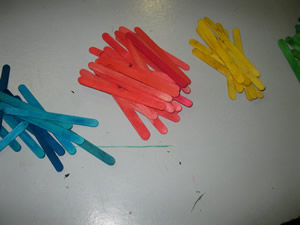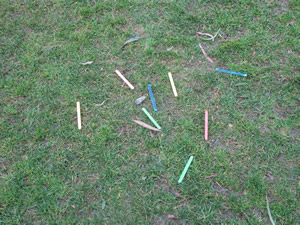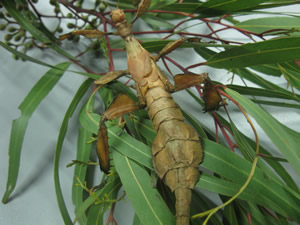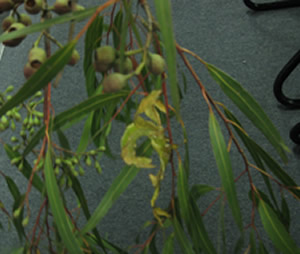The aim of this exercise is to model natural selection in a population of stick insects with a variety of skin colours.
Method - obtain 100 red coloured icy pole sticks, 100 blue, 100 green, 100 yellow and 100 black. These represent the mutations in skin colour in the population.
Spread them evenly on a grassed sports oval. Allow the students to simulate aflock of birds of prey by running through the field and picking up as many sticks as they can find. Students must run quickly in a straight line without coming back or hovering.



| Colour | Start | Number eaten after first pass |
% eaten | Number eaten after second pass | % eaten | Number eaten after third pass | % eaten | Number eaten after forth pass | % eaten | Number eaten after fifth pass | % eaten |
| Red | 100 | ||||||||||
| Blue | 100 | ||||||||||
| Green | 100 | ||||||||||
| Yellow | 100 | ||||||||||
| Black | 100 |
1) After the first pass:
- What colour stick insect had the least number of individuals eaten? Why?
- What colour had the greatest number of individuals eaten? Why?
2) How would the different colours come about in nature?
3) Does variation increase the chance of a species surviving? Explain
4) On the graph below plot the number of individual insects of each colour remaining versus number of passes.
- How many passes will it take to completely wipe out the red insects?
- After 6 passes how many individuals of each colour remain?
- Which colour will out survive all others? Why?

5) Is it advantageous for the entire population of the stick insects to be all one colour? Explain.
6) If green insects remain, what is the likely outcome of the colour of the insect population after two generations?
7) What would happen if all the grass dried out and turned yellow?
8) Consider the image on the right of stick insects in dry grass. Whisch colour has the advantage now?
9) Explain how a population develops unique characteristic features that best help it survive in its environment. Use the words natural selection, mutation, variation.




The image on the right shows a representation of a stick insect population.
This image best shows

The image on the right shows the many variants in a stick insect population.
This image represents
